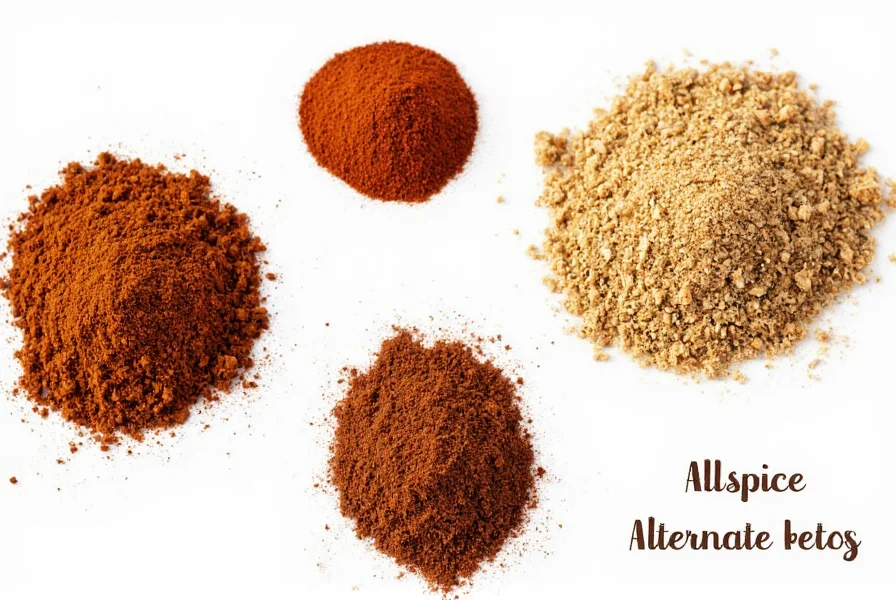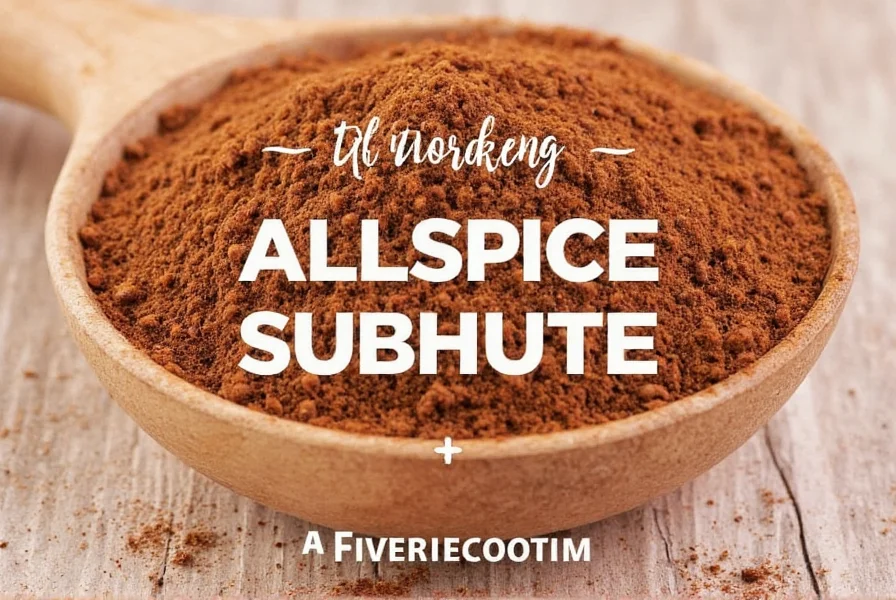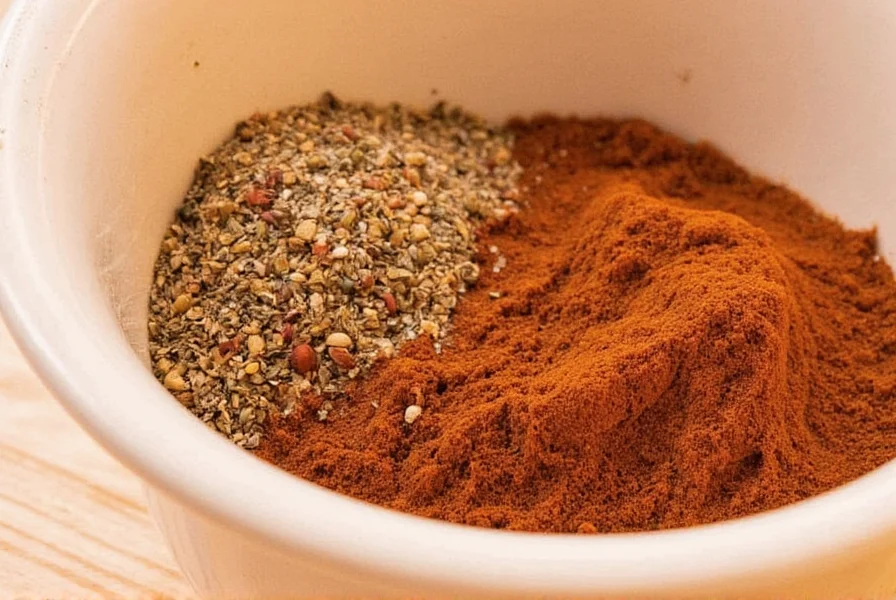When you're in the middle of cooking and realize you've run out of allspice, knowing reliable substitutes can save your recipe. Allspice, despite its name, isn't a blend but a single berry from the Pimenta dioica tree that naturally combines flavors reminiscent of cinnamon, nutmeg, and cloves. Understanding what creates allspice's distinctive taste helps you create effective alternatives using common pantry spices.
Why You Need an Allspice Substitute
Allspice plays a crucial role in many recipes, from Jamaican jerk seasoning to pumpkin pie and even some meat rubs. Its unique flavor profile—combining sweet, warm, and slightly peppery notes—makes it challenging to replace with a single spice. When seeking allspice replacement options, consider both the recipe type and which flavor elements matter most for your dish.
Top Allspice Alternatives with Measurements
Not all substitutes work equally well in every recipe. Here's a comprehensive guide to the most effective allspice alternatives with precise measurements:
| Alternative | Ratio for 1 tsp Allspice | Best For | Flavor Notes |
|---|---|---|---|
| Cinnamon-Nutmeg-Cloves Blend | 1/2 tsp cinnamon + 1/4 tsp nutmeg + 1/4 tsp cloves | Most baking and savory dishes | Closest match to allspice's complex profile |
| Pumpkin Pie Spice | 1 tsp | Baking, especially fall desserts | Slightly sweeter, less peppery than allspice |
| Cinnamon Only | 3/4 tsp | Sweet dishes needing warmth | Lacks complexity but provides warmth |
| Cloves Only | 1/4 tsp | Ham glazes, hearty stews | Stronger, more medicinal flavor |
Creating the Perfect Allspice Replacement Blend
The cinnamon-nutmeg-cloves combination remains the gold standard for allspice substitute recipes. For best results:
- Mix spices thoroughly before adding to your recipe
- For savory dishes, consider adding a pinch of black pepper to mimic allspice's slight heat
- In baking applications, add 1/8 teaspoon cardamom for enhanced complexity
- Always taste and adjust—spice potency varies by brand and freshness

When to Use Specific Allspice Alternatives
Different recipes benefit from different substitutes. Understanding which alternative works best for specific cooking applications ensures your dish turns out perfectly:
For Baking Projects
Pumpkin pie spice makes an excellent allspice replacement in sweet applications. Since it typically contains cinnamon, ginger, nutmeg, and cloves, it provides similar warmth. Use a 1:1 ratio, but reduce other spices in your recipe slightly to prevent overpowering flavors. This works particularly well for allspice substitute for pumpkin pie and other fall desserts.
For Savory Dishes
When making Jamaican jerk seasoning or meat rubs, the classic three-spice blend works best. For Caribbean recipes specifically, add 1/8 teaspoon black pepper to your substitute to better mimic allspice's slight heat. This creates the most authentic allspice substitute for jerk chicken and similar dishes.
Single-Spice Emergency Substitutes
If you only have one relevant spice available:
- Cinnamon: Use 3/4 teaspoon per teaspoon of allspice. Best for sweet dishes where complexity matters less
- Nutmeg: Use 1/2 teaspoon. Works well in creamy sauces and some baked goods
- Cloves: Use 1/4 teaspoon. Ideal for ham glazes but overpowering in most other applications
Common Mistakes to Avoid with Allspice Substitutes
Many home cooks make these errors when replacing allspice:
- Using equal parts of each spice in the blend (cinnamon should dominate)
- Not adjusting for the stronger potency of ground cloves
- Adding too much substitute, overwhelming other flavors
- Using pre-mixed blends with added sugar for savory dishes
- Substituting whole spices with the same measurements as ground
Storing Your Homemade Allspice Blend
If you create a larger batch of your cinnamon-nutmeg-clove blend as an allspice alternative, store it properly to maintain freshness:
- Use an airtight container away from light and heat
- Label with the date—homemade blends stay potent for 3-4 months
- Consider making small batches to ensure maximum flavor
- Refresh the blend if it no longer has a strong aroma when opened

Understanding Flavor Profiles for Better Substitutions
Allspice's magic comes from its natural combination of flavors. When creating an allspice replacement for baking or savory dishes, consider which elements matter most for your specific recipe:
- If warmth is key (like in gingerbread), emphasize cinnamon
- If complexity matters most (like in beef stew), balance all three spices equally
- If sweetness dominates (like in fruit pies), reduce cloves slightly
- If you need the peppery note (like in sausages), add a pinch of black pepper
Professional chefs often adjust their allspice alternatives based on the specific dish rather than using a one-size-fits-all approach. This attention to detail makes the difference between a good substitution and one that perfectly mimics allspice's unique character.
FAQ: Allspice Substitutes
Can I substitute pumpkin pie spice for allspice?
Yes, pumpkin pie spice makes an excellent 1:1 substitute for allspice in baking applications. Since it typically contains cinnamon, ginger, nutmeg, and cloves, it provides similar warmth. However, it's slightly sweeter and less peppery than allspice, so it works best in sweet recipes rather than savory dishes.
What's the best single spice to replace allspice?
Cinnamon is the most versatile single-spice substitute for allspice. Use 3/4 teaspoon of cinnamon for every 1 teaspoon of allspice required. While it lacks the complexity of allspice, it provides the dominant warm note. For savory dishes, cloves (using just 1/4 teaspoon) work better but can be overpowering if used in larger quantities.
How do I make a large batch of allspice substitute?
To make a 1/4 cup allspice substitute, combine 2 tablespoons cinnamon, 1 tablespoon nutmeg, and 1 tablespoon ground cloves. Mix thoroughly and store in an airtight container away from light and heat. This blend will stay fresh for 3-4 months. Always check the aroma before using - if it's not strongly fragrant, it's time to make a fresh batch.
Can I use whole spices instead of ground for allspice substitute?
Yes, but with important adjustments. For every 1 teaspoon of ground allspice, use 1 teaspoon of freshly grated whole nutmeg, 1/2 teaspoon ground cinnamon (or 1 cinnamon stick steeped in liquid components), and 4-5 whole cloves (remove before serving). Whole spices have different potency, so this works best in recipes with liquid components where spices can infuse.
Why does my allspice substitute taste different than real allspice?
Allspice has a unique chemical composition that naturally combines flavors of several spices. Your substitute might taste different because: 1) Spice ratios are off (cinnamon should dominate), 2) Spices aren't fresh (ground spices lose potency in 6 months), 3) You're using pre-mixed blends with added sugar, or 4) The recipe requires allspice's specific peppery note which needs a pinch of black pepper in your substitute.











 浙公网安备
33010002000092号
浙公网安备
33010002000092号 浙B2-20120091-4
浙B2-20120091-4